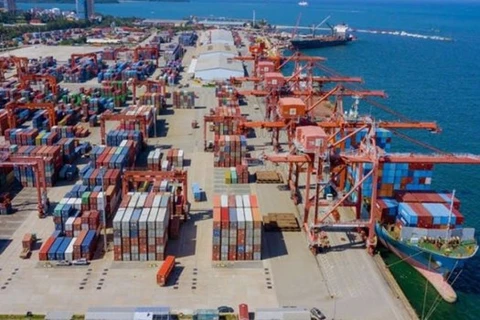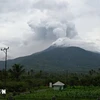Phnom Penh (VNA) – Cambodia’s peppercorn exports in the first seven months of 2022 stood at about 6,990 tonnes, nearly a 70% decline compared to the same period last year, according to the country’s Ministry of Agriculture, Forestry and Fisheries.
Of the figure, exports to Vietnam accounted for 90.1%, or nearly 6,300 tonnes.
Other top destination markets were Germany (608.44 tonnes), Chinese Taiwan (21 tonnes), France (15.08 tonnes), Malaysia (13.64 tonnes), and Belgium (13.24 tonnes).
Cambodian Pepper and Spices Federation (CPSF) president Mak Ny attributed the decline in peppercorn exports to a downtrend in global demand for the product caused by the COVID-19 pandemic, the impact of the Ukraine conflict, and the uncertainty of economic recovery.
He said exports were also held back by a 10% year-on-year dip in prices for the commodity that has made farmers hesitant to sell to traders, as well as insufficient sunlight to dry the berries in a year marked by unusually high rainfall.
Vietnam remains the biggest buyer of Cambodian peppercorn largely due to a lack of warehousing and drying facilities in the Kingdom, along with the prohibitively expensive costs associated with exporting the spice to more distant markets, he said, adding that a CPSF working group is looking into shipping pepper to Middle Eastern countries as well.
The current prices for dried black pepper bought directly from farmers is around 12,000-13,000 riel (3.00-3.25 USD) per kilogramme, down from 14,000-15,000 last year. These prices are much lower than those of high quality Kampot pepper which is protected under national geographical indication (GI).
The prices for this type of peppercorn have remained the same for several years, at 15 USD for black, 25USD for red and 28 USD for white, Kampot Pepper Promotion Association president Nguon Lay told The Phnom Penh Post.
Cambodia last year exported over 28,074 tonnes of peppercorn, rising by 452.7% from the 5,079 tonnes logged in 2020. The total area under pepper cultivation is estimated at roughly 6,000ha nationwide, with significant quantities grown in Tbong Khmum, Mondulkiri and Ratanakkiri provinces./.
Of the figure, exports to Vietnam accounted for 90.1%, or nearly 6,300 tonnes.
Other top destination markets were Germany (608.44 tonnes), Chinese Taiwan (21 tonnes), France (15.08 tonnes), Malaysia (13.64 tonnes), and Belgium (13.24 tonnes).
Cambodian Pepper and Spices Federation (CPSF) president Mak Ny attributed the decline in peppercorn exports to a downtrend in global demand for the product caused by the COVID-19 pandemic, the impact of the Ukraine conflict, and the uncertainty of economic recovery.
He said exports were also held back by a 10% year-on-year dip in prices for the commodity that has made farmers hesitant to sell to traders, as well as insufficient sunlight to dry the berries in a year marked by unusually high rainfall.
Vietnam remains the biggest buyer of Cambodian peppercorn largely due to a lack of warehousing and drying facilities in the Kingdom, along with the prohibitively expensive costs associated with exporting the spice to more distant markets, he said, adding that a CPSF working group is looking into shipping pepper to Middle Eastern countries as well.
The current prices for dried black pepper bought directly from farmers is around 12,000-13,000 riel (3.00-3.25 USD) per kilogramme, down from 14,000-15,000 last year. These prices are much lower than those of high quality Kampot pepper which is protected under national geographical indication (GI).
The prices for this type of peppercorn have remained the same for several years, at 15 USD for black, 25USD for red and 28 USD for white, Kampot Pepper Promotion Association president Nguon Lay told The Phnom Penh Post.
Cambodia last year exported over 28,074 tonnes of peppercorn, rising by 452.7% from the 5,079 tonnes logged in 2020. The total area under pepper cultivation is estimated at roughly 6,000ha nationwide, with significant quantities grown in Tbong Khmum, Mondulkiri and Ratanakkiri provinces./.
VNA























